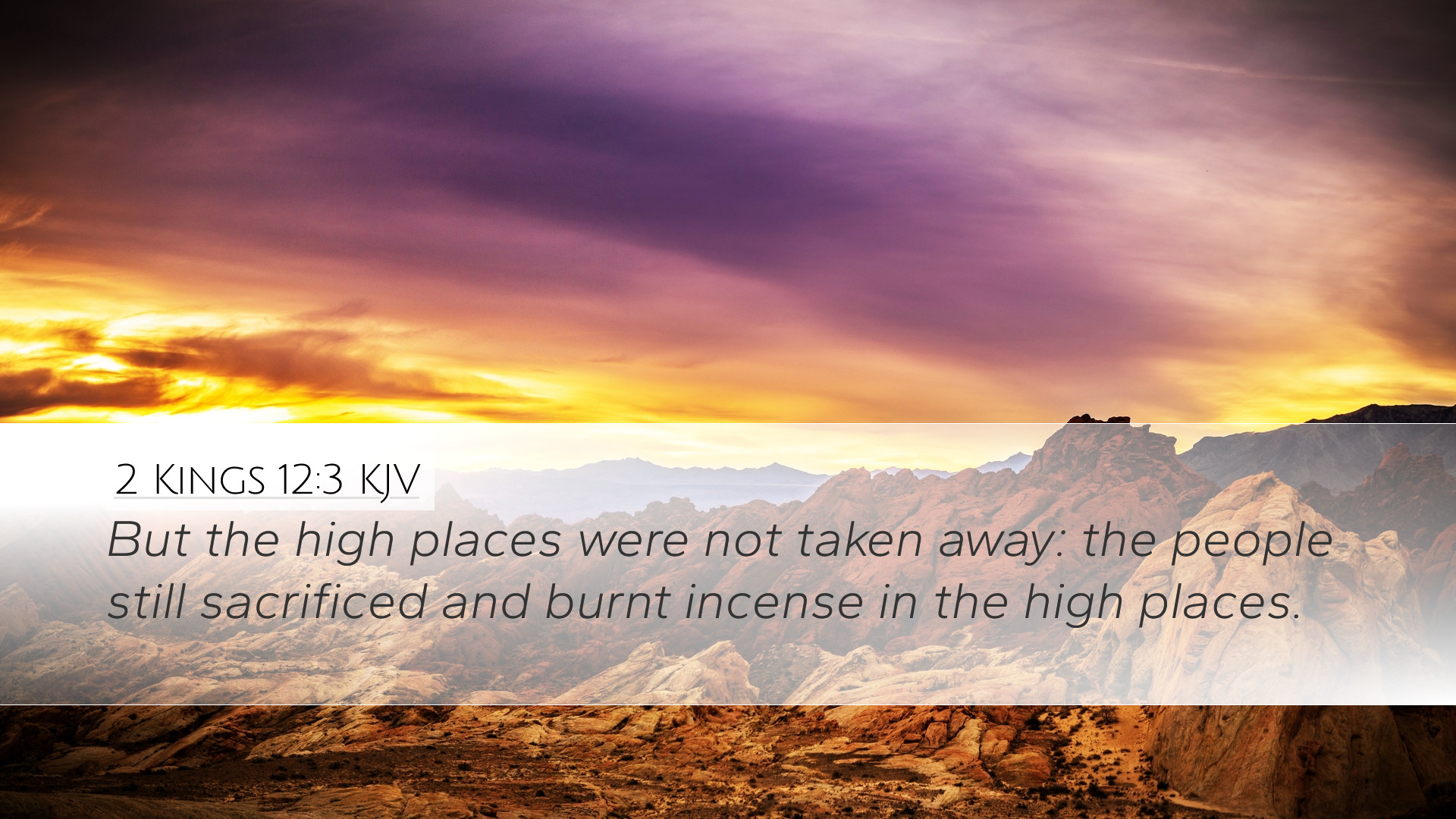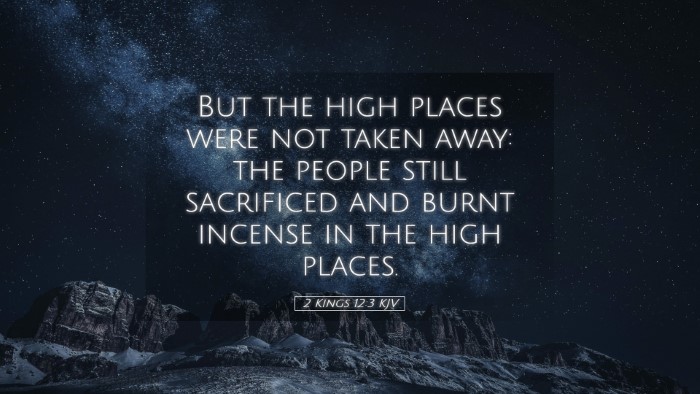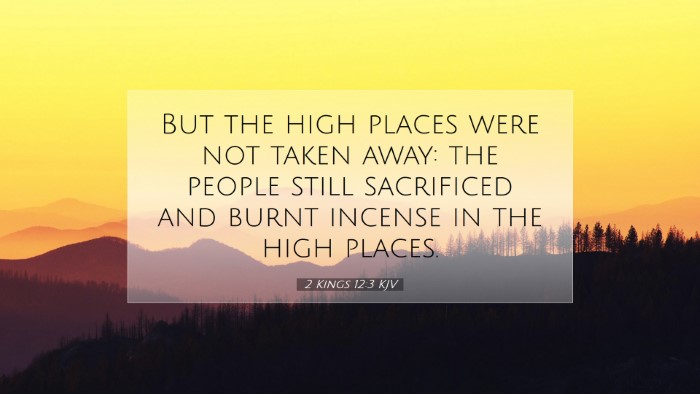Old Testament
Genesis Exodus Leviticus Numbers Deuteronomy Joshua Judges Ruth 1 Samuel 2 Samuel 1 Kings 2 Kings 1 Chronicles 2 Chronicles Ezra Nehemiah Esther Job Psalms Proverbs Ecclesiastes Song of Solomon Isaiah Jeremiah Lamentations Ezekiel Daniel Hosea Joel Amos Obadiah Jonah Micah Nahum Habakkuk Zephaniah Haggai Zechariah Malachi2 Kings 12:3
2 Kings 12:3 KJV
But the high places were not taken away: the people still sacrificed and burnt incense in the high places.
2 Kings 12:3 Bible Commentary
Commentary on 2 Kings 12:3
Text of the Verse: "But the high places were not taken away: the people still sacrificed and burnt incense in the high places."
Introduction
The verse from 2 Kings 12:3 serves as a pivotal observation in the reign of King Jehoash (or Joash) of Judah. It highlights the reluctance of the people to abandon pagan practices, specifically the worship conducted at high places, despite the reformative efforts initiated by Jehoash. The commentary below synthesizes insights from several public domain sources, providing a comprehensive exploration of the implications of this verse.
Historical Context
Jehoash ascended to the throne following a tumultuous period marked by idolatry and unfaithfulness to Yahweh. His reign is often viewed through the lens of reform, yet the persistence of high place worship presents a significant challenge to the narrative of restoration.
Matthew Henry's Insights
According to Matthew Henry, the observation of high places remaining intact signifies a complex reality in the spiritual state of Judah. Despite Jehoash’s commitment to repairing the temple and reinstating Yahwistic worship, the people's attachment to established practices reflects a deeper issue of spiritual compromise. Henry stresses that these high places represent both a physical and a spiritual obstacle to true worship.
Albert Barnes' Analysis
Albert Barnes elaborates that the "high places" were remnants of former worship practices associated with Canaanite religions. Their persistence is indicative of a syncretistic approach among the people; they sought to worship Yahweh while simultaneously adhering to customs that contradicted His commandments. Barnes notes that without the removal of these high places, Jehoash's reforms could not achieve their full potential, as true worship requires exclusivity and purity before God.
Adam Clarke's Commentary
Adam Clarke discusses the religious state of Judah during Jehoash's reign, asserting that the people's failure to relinquish high place worship signifies an unresolved tension in their faith. Clarke posits that the phenomena of dual worship hindered spiritual growth and true fidelity to God. He emphasizes the need for a complete return to Yahweh without the encumbrance of pagan rituals, stating that such a half-hearted approach to faith could invite divine judgment.
Theological Implications
This verse sheds light on several theological themes relevant to contemporary readers:
- The Nature of Reform: True reform must address not only external practices but also the internal motivations and loyalties of the heart.
- Syncretism in Worship: The blending of secular practices with sacred worship can lead to a dilution of faith, raising questions about the purity and authenticity of one's relationship with God.
- Divine Expectations: God desires undivided loyalty, and half-measures in worship often fall short of His call to holiness.
Practical Applications
Pastors and church leaders can glean valuable lessons from the recorded events in this passage by considering the following applications:
- Identifying High Places: Church congregations should assess their own practices for potential "high places" that may compromise their devotion to God.
- Encouraging Wholehearted Worship: Leaders should emphasize the importance of undivided worship to foster a culture that honors God alone.
- Educating on True Worship: Teaching on the nature of biblical worship can help congregations discern and reject syncretism in their faith expressions.
Conclusion
2 Kings 12:3 encapsulates a moment of historical significance that invites reflection on the nature of worship and reform. The persistence of high places amidst proclaimed reforms acts as a cautionary tale for believers to engage deeply and honestly with their faith. By understanding the complexities, historical context, and theological implications of this verse, modern readers can draw parallels to their own practices and convictions, striving towards an unyielding commitment to the worship of Yahweh.


